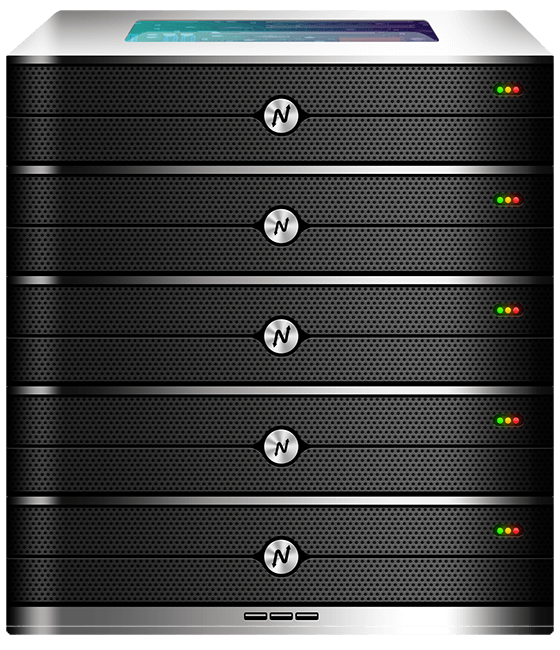If your audience sits in Asia-Pacific or you need a low-latency global edge, a VPS Singapore is one of the smartest infrastructure choices you can make. Singapore is a major internet hub with excellent peering, strong data-center compliance, and predictable network routes. That matters globally because fast, reliable hosting improves user experience, search rankings, and conversion rates. Indian hosting is cost-effective and very capable for regional workloads, but when you want the shortest path into Southeast Asia, a VPS Singapore reduces round-trip time and improves consistency. In this guide I’ll explain when a Singapore VPS makes sense, how to choose the right plan, real-world use cases, and which XenaxCloud plans map best to your needs.

What is a VPS Singapore and why it matters
A VPS Singapore is a virtual private server located in Singapore data centers. It gives you isolated CPU, RAM, storage, and bandwidth on shared physical hardware, with full root access and control. Compared to shared hosting, a VPS delivers predictable performance and configurability while remaining cost-effective versus dedicated servers.
Why choose a VPS Singapore:
- Low latency to Southeast Asia and Australia, improving page load and API response times.
- Strong network peering and multiple international transit options.
- Easy to combine with global CDNs and managed DNS for worldwide reach.
- A good balance of cost and performance for SaaS, e-commerce, gaming backends, and developer environments.
As you evaluate options, pay attention to CPU cores, RAM, NVMe or SSD storage, and monthly bandwidth — these determine how well the VPS handles traffic spikes. XenaxCloud’s KVM VPS family is a solid place to start for Singapore deployment because KVM provides strong isolation and consistent performance.
How to choose the right Singapore VPS plan
Choosing a VPS Singapore requires mapping technical needs to plan specs. Ask these questions:
- What traffic volume and concurrency do you expect?
- Will your site run heavy databases, in-memory caching, or background workers?
- Do you need managed services or full self-management?
- Is IPv6 support, backup, and snapshot capability important?
Beginner and small projects
If you’re launching a small app or a staging environment, start small and scale. XenaxCloud’s KVM VPS 1 — 2 Vcore CPU, 8GB RAM, 40GB Storage, 2TB Bandwidth, $5.99 provides an excellent entry point for most developer projects and low-traffic production sites.
Growing apps and production services
For steady production workloads, pick a plan with more CPU and RAM. KVM VPS 2 — 4 Vcore CPU, 16GB RAM, 50GB Storage, 4TB Bandwidth, $10.79 or KVM VPS 3 — 8 Vcore CPU, 32GB RAM, 80GB Storage, 5TB Bandwidth, $17.99 offer headroom for caching, database optimization, and background jobs.
Performance-first deployments
If ultra-low latency and I/O performance are critical, choose SPEED KVM VPS tiers. For example, KVM VPS 3 — 8 Vcore CPU, 16GB RAM, 70GB Storage, 4TB Bandwidth, $14.39 in SPEED KVM gives higher single-threaded performance for compute-intensive tasks.
- 4 GB RAM
- 40 GB SSD Storage
- 2 TB Bandwidth
- 1 IPV4 & IPV6
Technical considerations explained simply
CPU and RAM: More vcores and RAM let you serve more concurrent users. A web server with many dynamic requests benefits from CPU and memory.
Storage: NVMe/SSD lowers disk latency. Databases and file-heavy apps should prefer faster storage.
Bandwidth: Monthly bandwidth affects transfer limits. Choose a plan with sufficient data allowance for expected traffic.
Region: A VPS Singapore reduces latency for APAC users; pairing it with CDN edges provides a global fast path.
Speed, uptime, and security advantages
Speed and latency
Singapore has excellent international peering and submarine cable links. A VPS Singapore reduces time-to-first-byte for users in Southeast Asia and minimizes jitter for APIs and real-time apps. Adding IPv6 (where available) can improve routing on networks that prefer IPv6.
Uptime and reliability
Look for providers with redundant network uplinks, power redundancy, and proactive monitoring. XenaxCloud operates data-center-grade infrastructure with 24/7 monitoring and support to maintain service availability.
Security and compliance
Your VPS should support secure access methods (SSH keys), firewall configuration, regular OS patching, and optionally managed backups. For regulated industries, check data residency and compliance options — Singapore data centers often meet regional compliance standards.
Real-world use cases for a VPS Singapore
- Regional SaaS platform
A SaaS company targeting Southeast Asia benefits from a VPS Singapore origin to provide snappy UI interactions and fast API responses. Deploy application servers in Singapore and use a CDN to cache static assets globally. - E-commerce site with APAC customers
For local payment gateways and faster checkout, host the core application on a Singapore VPS and use distributed databases or read replicas to scale reads. - Game servers and real-time apps
Games and VoIP rely on low latency. A VPS Singapore near the target audience reduces packet travel time and improves player experience. - Development, CI/CD runners, and staging
Developers can use compact KVM VPS plans as CI runners or staging environments that reflect production, ensuring parity and faster testing cycles. - Hybrid deployment with India and Singapore
For companies with Indian operations and APAC customers, use Indian servers for cost-effective internal services and Singapore VPS for customer-facing endpoints to optimize regional performance.
Why Indian servers and Singapore VPS often work together
Indian servers are cost-effective, offer strong reliability, and are optimal for South Asian markets. But for Southeast Asia and Oceania, Singapore often wins on latency and connectivity. A hybrid architecture can use Indian servers for internal processing or region-specific workloads while deploying a VPS Singapore for customer-facing services in APAC. This approach combines cost-effectiveness with regional speed.
Comparison: Indian servers vs US, Canada, Germany, UAE vs Singapore
Below is a neutral comparison showing how regions differ for hosting and DNS choices.
| Factor | India | Singapore | US/Canada | Germany (EU) | UAE |
|---|---|---|---|---|---|
| Latency to South Asia | Lowest | Low | High | Moderate | Moderate |
| Latency to Southeast Asia | Moderate | Lowest | High | Moderate | Low |
| Global CDN integration | Good | Excellent | Excellent | Excellent | Good |
| 24/7 support & provisioning | Strong | Strong | Large | Strong | Varies |
| Best for | South Asia users, cost-sensitive ops | APAC users, low-latency apps | North America audience | EU privacy regulations | Middle East audience |
This table shows Singapore’s strength for APAC reach while India is a cost-efficient hub for South Asia. For global reach, combine a VPS Singapore with CDN and managed DNS.
Scalability options for startups and agencies
Startups and agencies need predictable growth paths. Use these patterns:
- Vertical scaling: move to a larger KVM VPS instance (e.g., from KVM VPS 1 to KVM VPS 3) to get more CPU and RAM without architecture changes.
- Horizontal scaling: use load balancers and multiple VPS Singapore instances behind them to handle concurrency spikes.
- Containerization: deploy Docker or Kubernetes on VPS instances to orchestrate microservices across Singapore and other regions.
- Managed services: use managed databases, object storage, and CDNs to offload operational overhead.
Recommended XenaxCloud plans for common scenarios
- Developer / small project: KVM VPS 1 — 2 Vcore CPU, 8GB RAM, 40GB Storage, 2TB Bandwidth, $5.99.
- Production web app / commerce: KVM VPS 2 — 4 Vcore CPU, 16GB RAM, 50GB Storage, 4TB Bandwidth, $10.79.
- High-performance or I/O-sensitive app: SPEED KVM VPS 3 — 8 Vcore CPU, 16GB RAM, 70GB Storage, 4TB Bandwidth, $14.39.
- Scaling mid-market app: KVM VPS 3 — 8 Vcore CPU, 32GB RAM, 80GB Storage, 5TB Bandwidth, $17.99.
These plans match common needs when selecting a VPS Singapore and provide straightforward upgrade paths as usage grows.
FAQ
What is the difference between Indian VPS and foreign VPS?
Indian VPS offers lower latency for South Asian users and often lower operational costs; foreign VPS in regions like Singapore or the US may be faster for their respective local audiences.
Can a VPS Singapore handle global website traffic?
Yes — combine a VPS Singapore with CDN and multi-region DNS to serve global traffic efficiently while keeping low latency for APAC users.
How reliable is XenaxCloud hosting?
XenaxCloud provides data-center-grade infrastructure, redundancy, monitoring, and 24/7 support to maintain reliability and rapid incident response
How to choose the right server for my business?
Match expected traffic, resource needs, and geographic targets; start with a modest VPS and scale up as traffic and CPU/RAM demands grow.
Match expected traffic, resource needs, and geographic targets; start with a modest VPS and scale up as traffic and CPU/RAM demands grow.
Conclusion — pick the VPS Singapore that fits your audience
A VPS Singapore is an excellent choice when your primary audience lives in Southeast Asia, Australia, or nearby markets. It reduces latency, improves user experience, and works well with CDNs for global reach. For businesses balancing cost and regional performance, combining Indian servers for internal workloads and a VPS Singapore for customer-facing endpoints often delivers the best of both worlds.
Start with an entry-level XenaxCloud KVM VPS like KVM VPS 1 — 2 Vcore CPU, 8GB RAM, 40GB Storage, 2TB Bandwidth, $5.99 and scale to KVM VPS 2 or KVM VPS 3 as demand grows. If performance is the priority, consider the SPEED KVM VPS family.
Ready to deploy? Explore XenaxCloud VPS plans and register your server today at the XenaxCloud VPS page. XenaxCloud offers fast provisioning, transparent specs, and a 15-day money-back guarantee so you can test performance and configuration risk-free. Check current deals on the XenaxCloud Offers Page.





